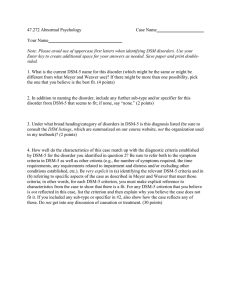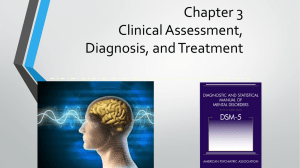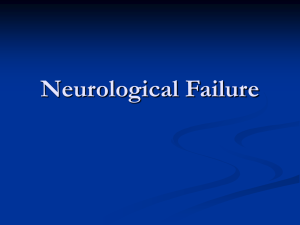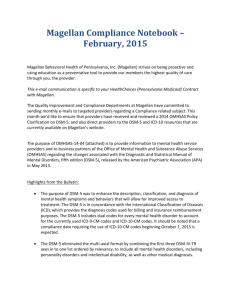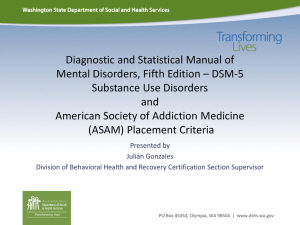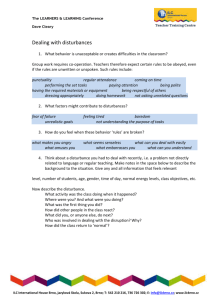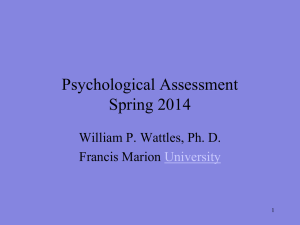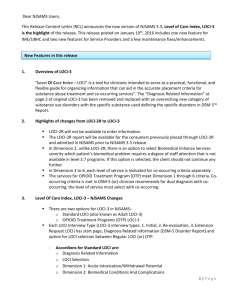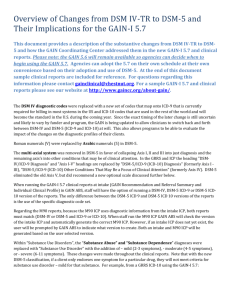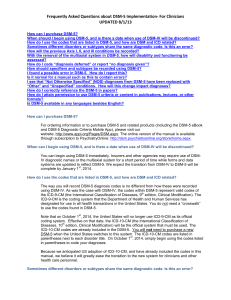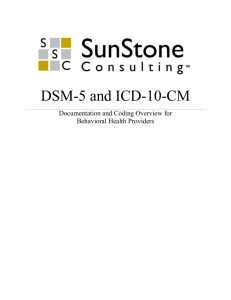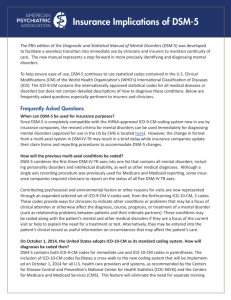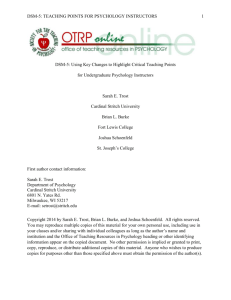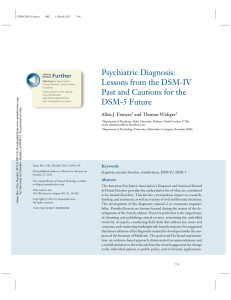Table 1 - BioMed Central
advertisement
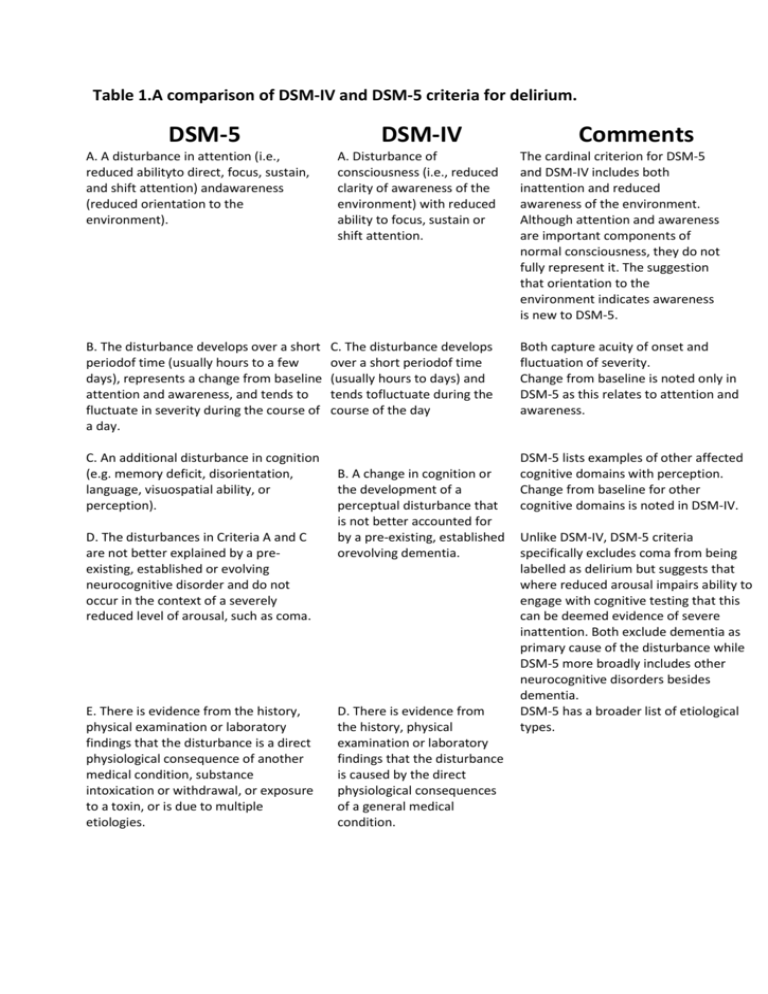
Table 1.A comparison of DSM-IV and DSM-5 criteria for delirium. DSM-5 A. A disturbance in attention (i.e., reduced abilityto direct, focus, sustain, and shift attention) andawareness (reduced orientation to the environment). B. The disturbance develops over a short periodof time (usually hours to a few days), represents a change from baseline attention and awareness, and tends to fluctuate in severity during the course of a day. C. An additional disturbance in cognition (e.g. memory deficit, disorientation, language, visuospatial ability, or perception). D. The disturbances in Criteria A and C are not better explained by a preexisting, established or evolving neurocognitive disorder and do not occur in the context of a severely reduced level of arousal, such as coma. E. There is evidence from the history, physical examination or laboratory findings that the disturbance is a direct physiological consequence of another medical condition, substance intoxication or withdrawal, or exposure to a toxin, or is due to multiple etiologies. DSM-IV A. Disturbance of consciousness (i.e., reduced clarity of awareness of the environment) with reduced ability to focus, sustain or shift attention. C. The disturbance develops over a short periodof time (usually hours to days) and tends tofluctuate during the course of the day B. A change in cognition or the development of a perceptual disturbance that is not better accounted for by a pre-existing, established orevolving dementia. D. There is evidence from the history, physical examination or laboratory findings that the disturbance is caused by the direct physiological consequences of a general medical condition. Comments The cardinal criterion for DSM-5 and DSM-IV includes both inattention and reduced awareness of the environment. Although attention and awareness are important components of normal consciousness, they do not fully represent it. The suggestion that orientation to the environment indicates awareness is new to DSM-5. Both capture acuity of onset and fluctuation of severity. Change from baseline is noted only in DSM-5 as this relates to attention and awareness. DSM-5 lists examples of other affected cognitive domains with perception. Change from baseline for other cognitive domains is noted in DSM-IV. Unlike DSM-IV, DSM-5 criteria specifically excludes coma from being labelled as delirium but suggests that where reduced arousal impairs ability to engage with cognitive testing that this can be deemed evidence of severe inattention. Both exclude dementia as primary cause of the disturbance while DSM-5 more broadly includes other neurocognitive disorders besides dementia. DSM-5 has a broader list of etiological types. Note: Adapted to allow direct item comparison from DSM IV (American Psychiatric Association, 1994) and DSM 5 (American Psychiatric Association, 2013).


